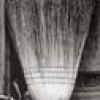
Posted
If I create a progression in the Arrangement window under the Progression tab and then select an Accompaniment Pattern, the pattern only plays when I click on individual chords but never during playback. In the latest video "Live Chord Detection" the patterns seem to work as they did when I was using HN2.
I spent several hours yesterday evening trying to figure this out…
What am I doing wrong? :-?
Wed, 2012-08-29 - 16:50 Permalink
Options for playing live pallete:
mainscreen HN2
Playback >> Play selection live and Instant feedback
For Palette
Playback >> instand feedback
Try these out for live palette playing
Note: when is the Live Chord Detection coming for HN2?
Wed, 2012-08-29 - 17:37 Permalink
Synfire does not tie an arrangement to a pattern. They are independent. Your arrangement can be anything you can imagine, while in HN2 it is based on a single pattern that is modified by the user.
You can make any container become the current real-time accompaniment with Container >> Make Accompaniment. It will also play during live chord detection, or when you play a palette.
Wed, 2012-08-29 - 18:00 Permalink
You can make any container become the current real-time accompaniment with Container >> Make Accompaniment.
Andre, I have tried that many, many times but I still cannot make the pattern play. There must be something else that I am doing wrong.
I have tried selecting Make Accompaniment from the Container menu and by right clicking on the container and seleting it in the contextual menu.
Wed, 2012-08-29 - 18:50 Permalink
No. You should not need to convert anything. Once you created it from the container, it is live and online for playing. If it doesnt play, there may be something else going wrong.
Of course you CAN save it as a standalone accompaniment file, or use any other ... accompaniment (... i hate this word ... ) from the Playback menu. Or go with Chords-Only playback mode using global instruments, as I did in the video.
Wed, 2012-08-29 - 19:12 Permalink
Andre,
could you please write a very simple step-by-step instruction on how to make a chord progression, starting with a new empty document, that will play with an Accompaniment Pattern?
I must simply be missing some very basic step that is necessary for this to work.
Btw, I noticed in you video the your container in the second part had a green line at the top but mine doesn't. Could that be a clue?
Wed, 2012-08-29 - 20:23 Permalink
- Open new arrangement and go to the Progression tab
- Pick desired pattern from Playback menu
- Check "Live Chord Detection"
- Play your keyboard
Instead of picking a pattern, you can also use Chords-Only mode, which is more useful in many cases. It uses the global Chords and Bass instruments only.
Wed, 2012-08-29 - 20:30 Permalink
If I understand you correctly, then you have tried the following:
- You open a new arrangement, go to the progression tab and enter some chords
- Then you choose one of the predefined accompaniment patterns from the playback menu
- Now you press play in the arrangment window and you expect that the chosen accompaniment pattern plays with your progression.
That's correct, isn't it? But it does not work this way in Synfire. The behaviour is different to HN in this point. At Synfire the accompaniment plays only at the separate accompaniment window (Playback >> Edit current accompaniment) or when you click chords at a palette.
If you want to play the accompaniment pattern with your progression, then you have these options:
1. you can drag the harmony parameter from the arrangement window to the accompaniment window. Then the pattern will play with the progression when you press start at the accompaniment window.
2. Or, if you want to play the pattern at the arrangement window (and I assume that you want that) then you can drag the patterns from the accompaniment window (instrument per instrument) to a container (for example the root container) at the arrangement window.
3. Or you execute the command File >> Convert >> Open as Arrangement at the Accompaniment window. This will open a new arrangement window with your accompaniment pattern stored at the rootcontainer. Then you can drag the harmony parameter from the first arrangement window to the new opened arrangement.
Wed, 2012-08-29 - 21:30 Permalink
juergen,
Yes, that is what I want to do and a big thanks for a great summary of possible ways to achieve this. And I suppose you are right, I just thought/hoped that the "Live Chord Detection" video indicated that there is a much easier way to do this. A magic shortcut maybe :)
Andre,
Sorry for being unclear again. Those 4 steps is not the problem. The problem is that after I have entered the chords using an Accompaniment Pattern, I want to listen to the whole progression using the same Accompaniment Pattern. At 2:38 and 3:36 in the "Live Chord Detection" video I get the impression that you just hit play and the whole progression plays using the same Accompaniment Pattern that you used when you selected each chord. Or maybe something else is gong on? Maybe you had already set up instruments the way juergen describes?
Wed, 2012-08-29 - 22:55 Permalink
At 2:38 and 3:36 in the "Live Chord Detection" video I get the impression that you just hit play and the whole progression plays using the same Accompaniment Pattern that you used when you selected each chord. Or maybe something else is gong on?
I watched the video to verify what you mean. It's not an accompaniment pattern that plays at 3:36. What you hear are simply the phrases which are stored at the containers in the arrangement. You can see the container structure at 3:33.
Wed, 2012-08-29 - 23:15 Permalink
Well, yes, I suppose you are right. But then I might ask, why isn't there is quicker and simpler way? Why not have a command that would just copy the present accompaniment pattern to the arrangement? Or maybe this is wouldn't be of any practical use? I suppose I got used to this when playing around in HN2 and to some extend I am obviously still stuck in that thinking…
Wed, 2012-08-29 - 23:25 Permalink
For a quite a while i noticed this "accompaniment container"..it is still shrouded in mystery for me
-How does it work ?
- Can i recognize this container in the arrangement ?
Once you created it from the container, it is live and online for playing.
Wed, 2012-08-29 - 23:47 Permalink
Why not have a command that would just copy the present accompaniment pattern to the arrangement?
I agree, that's not a bad idea. There could be a command that automatically creates a new container in the arrangement that contains the accompaniment pattern. But there would be a little problem: If multiple arrangement windows are openend, to which one should the pattern be copied?
Thu, 2012-08-30 - 08:29 Permalink
There could be a command that automatically creates a new container in the arrangement that contains the accompaniment pattern.
You can do that by opening the pattern editor and convert with File >> Convert >> Open as Arrangement and then copy/paste the root container to your arrangement.
The issue with patterns is
- they ought to be short and simple to render in real-time
- they need extra parameters and tracking information to work
- they must be flat (no structure)
Therefore a conversion is necessary between patterns and arrangements.
Thu, 2012-08-30 - 08:45 Permalink
Erm, as we are at it now: I would like to nuke this horrible term "Accompaniment" forever. Sounds like a 1980's home entertainer keyboard feature. Also it is not meant to be used for accompanying a human player anyway. Let alone it is impossible to pronouce and write fluidly. I also think "Pattern" is not much better. It sounds like a 1980's Commodore 64 sequencer, or even worst: Like a drum grid in a groove box.
I'd love to have something new and unusual as a name for it that reflects its real purpose and avoids misleading associations, perhaps ....
Streamer
?
Any ideas?
Thu, 2012-08-30 - 10:58 Permalink
You can do that by opening the pattern editor and convert with File >> Convert >> Open as Arrangement and then copy/paste the root container to your arrangement.
Yes of course, but that's a bit cumbersome. Copying/pasting of containers from one arrangement to another requires to grapple with the instrument assignment (I mean the dialog window that opens on pasting a container), for example.
It's really a nice feature of HN that one can pick an accompaniment (sorry for the ugly word ;) ) and then it plays instantly at the song view. I understand that people miss that a bit in Synfire. Wouldn't it be possible to have something similar in Synfire as well? If one picks an accompaniment (sorry again ;) ) from the list then it could be copied into the rootcontainer. Or into the currently selected container. Or into a new container.
Erm, as we are at it now: I would like to nuke this horrible term "Accompaniment" forever. Sounds like a 1980's home entertainer keyboard feature.
Haha, yes indeed! :D How about "Realtime Arranger" or "Realtime Arranger View" or "Realtime Prototyper" or "Sketchpad Player".
Thu, 2012-08-30 - 12:06 Permalink
HN2 is extremely simplified here in that it replaces all your instruments (!) when you switch the basis pattern. This is certainly not desirable in Synfire, because your previous work would be lost. So there is no way around selecting target instruments, which to replace, which to skip, etc.
Thanks evryone for your suggestions. Something with "Sketch" or "Draft" or "Realtime" would be nice.
Thu, 2012-08-30 - 13:12 Permalink
So there is no way around selecting target instruments, which to replace, which to skip, etc.
In Synfire there is no need to replace instruments (like in HN where only 8 instruments are available). Why not simply copy all instruments from the accompaniment and add them in the arrangement? That's what I usually do manually, i.e. I copy instrument per instrument from the accompaniment view to the arrangement.
Thu, 2012-08-30 - 15:18 Permalink
Why not simply copy all instruments from the accompaniment and add them in the arrangement?
That would work, but blow up your arrangement with new devices and instruments. Plug-ins get copied and loaded. RAM and CPU of the Engine are limited. Also your other instruments would continue playing alongside the new ones, possibly causing some chaos. There are many situations where a user will want or not want a certain result and that's what the dialog window is for.
The occasion where someone really wants to use one of the example patterns for their own compositions is rare. I would say this type of usage is not typical for Synfire.





